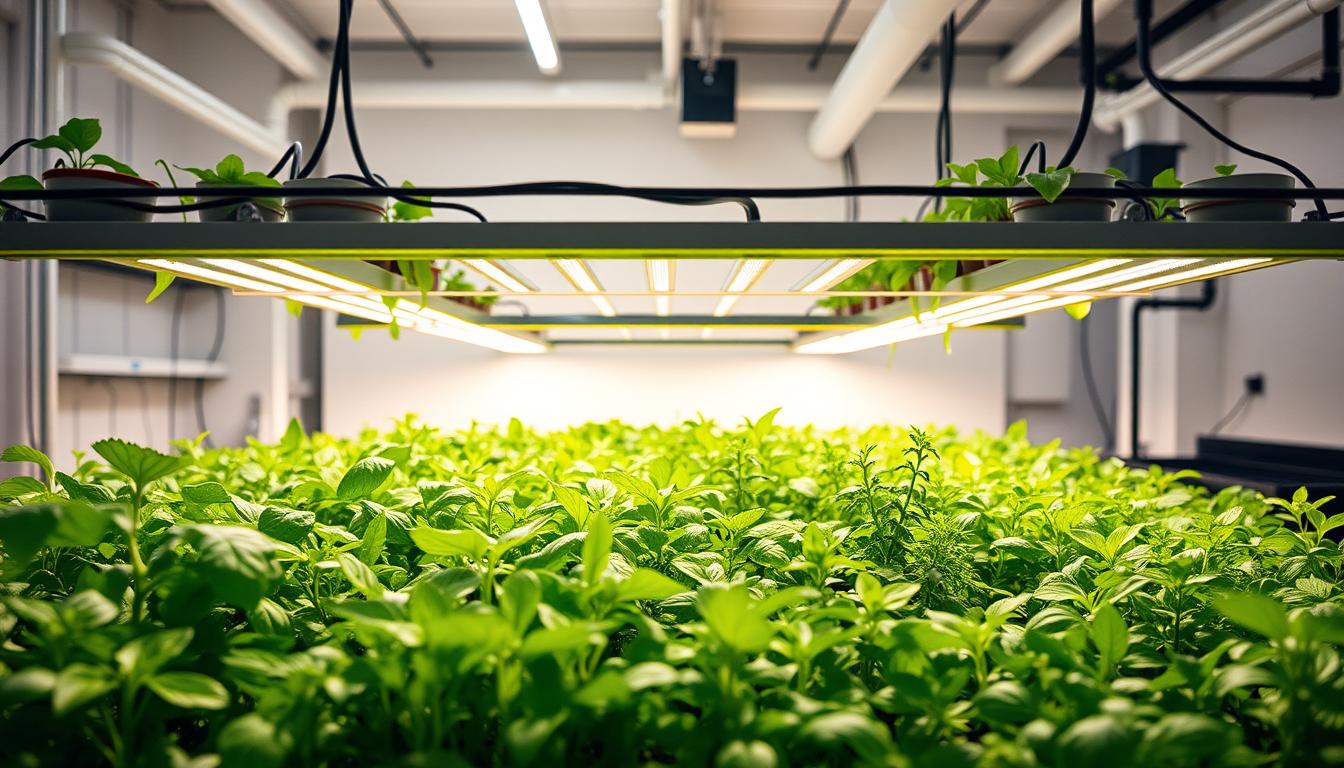Gardening takes an exciting twist with electroponics, a method blending hydroponics with atmospheric energy. Instead of relying solely on nutrient solutions, this approach uses copper wire and natural electrical currents to boost plant growth. Though modern, its roots trace back to 18th-century experiments, making it a fascinating mix of history and innovation.
DIY enthusiasts praise electroculture for speeding up growth and deterring pests naturally. Simple materials like wooden stakes and copper wire make it accessible. However, results vary across plant species, and scientific skepticism remains. Still, the potential benefits keep gardeners curious.
Key Takeaways
- Electroponics merges hydroponics with atmospheric energy for plant growth.
- Copper wire and wooden stakes are key materials for this method.
- Historical experiments from the 1700s inspired modern techniques.
- Faster growth and natural pest control are potential benefits.
- Results differ depending on the plant species used.
What Is Electroponics? A Beginner’s Introduction
Forget synthetic fertilizers—nature’s electricity can supercharge plant growth. This electroculture method taps into atmospheric energy using simple tools like copper wire and wooden stakes. Unlike hydroponics, it skips nutrient solutions entirely, relying on Earth’s natural currents to stimulate plant health.
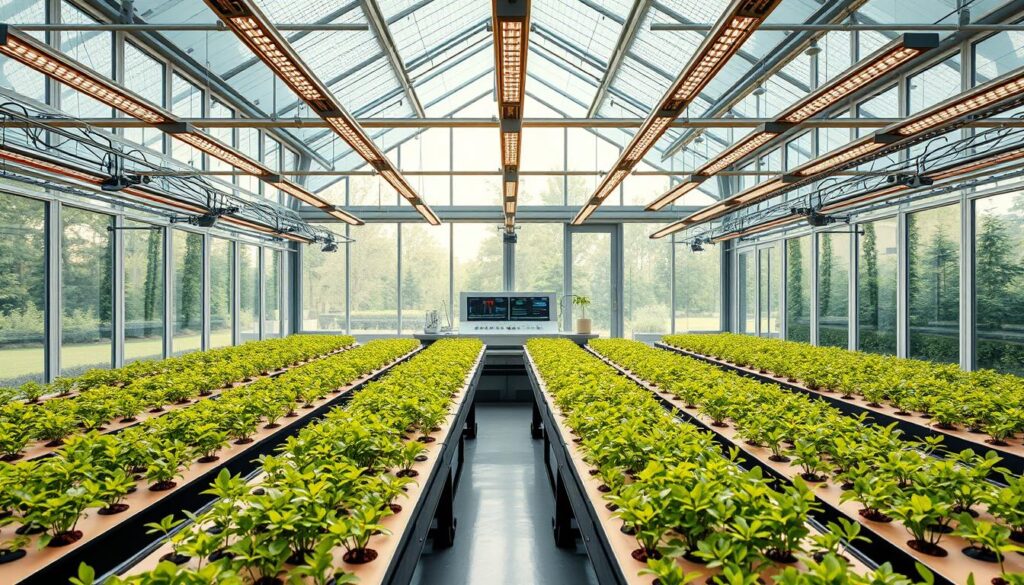
Defining Electroponics (Electroculture Gardening)
Electroculture harnesses telluric and atmospheric energy to enhance cultivation. Pioneered in the 1920s by Christofleau, it uses copper antennas to channel invisible currents. These currents boost cellular activity, often eliminating the need for chemical inputs.
How Electroponics Differs from Traditional Hydroponics
While hydroponics depends on liquid nutrients, electroponics thrives on ambient energy. Copper antennas—like Ighina spirals or Lakhovsky coils—act as conductors. This method not only speeds up growth but also reduces reliance on synthetic additives.
| Feature | Electroponics | Hydroponics |
|---|---|---|
| Energy Source | Atmospheric/telluric currents | Nutrient solutions |
| Key Material | Copper wire | Water pumps, grow lights |
| Environmental Impact | Low (no chemicals) | Moderate (energy-intensive) |
Gardeners favor this approach for its simplicity and eco-friendliness. Whether you’re growing herbs or tomatoes, copper-based systems offer a unique twist on modern gardening.
The Science and History Behind Electroponics
Historical experiments reveal nature’s hidden power to accelerate plant growth without chemicals. From Arctic explorers to backyard gardeners, the quest to harness Earth’s energy has shaped this technique.

Early Experiments: From the Arctic to Modern Gardens
In 1868, Karl Lemström observed lush vegetation under the aurora borealis. His research suggested atmospheric electricity boosted growth. By the 1920s, Christofleau proved it—40,000V wires increased oat yields by 22%.
German trials electrified strawberry fields, while *peas* grew faster using rain-generated currents. Yet, chemical fertilizers soon overshadowed these innovations.
The Role of Atmospheric and Telluric Currents
Two forces drive electroponics: atmospheric (air) and telluric (earth) currents. Copper antennas sync these energies, like Luigi Ighina’s spirals. Modern labs recorded a 75% jump in *cabbage* yields using this synergy.
Today, DIY designs revive these concepts. Wind and moisture act as natural conductors, making the technique accessible for crops and vegetables alike.
Benefits of Electroponics Gardening
Gardeners seeking sustainable solutions are turning to electroponics for surprising advantages. This method taps into natural energy to enhance plant health, offering measurable improvements over traditional techniques.

Faster Growth and Higher Yields
Copper antennas channel atmospheric currents, accelerating cellular activity. Studies show growth rates spike by 18% in peas and 22% in grains. Cabbage yields jumped 75% with electrical stimulation.
Seeds germinate faster due to the “wake-up effect” of mild currents. Strawberries develop higher sugar content, while root vegetables like beets bulk up quicker.
Reduced Need for Fertilizers and Pesticides
Soil currents naturally fix nitrogen, cutting synthetic fertilizers. Beetles and other pests avoid plants due to signal interference. One trial saw a 40% drop in aphid infestations.
Copper wire systems act as barriers, disrupting insect communication. This makes electroculture ideal for organic growers.
Improved Flavor and Nutrient Density
Electrified crops often taste richer. Shock-treated cabbage developed deeper flavor profiles in trials. Nutrient tests reveal:
| Nutrient | Electroponics | Conventional |
|---|---|---|
| Vitamin C | +15% | Baseline |
| Antioxidants | +20% | Baseline |
| Calcium | +12% | Baseline |
Leafy greens, berries, and herbs respond best. For gardeners prioritizing flavor and nutrient quality, this method delivers.
Drawbacks and Controversies of Electroponics
While electroponics offers exciting benefits, it’s not without its skeptics and challenges. From academic skepticism to inconsistent results, this method requires a balanced perspective before adoption.
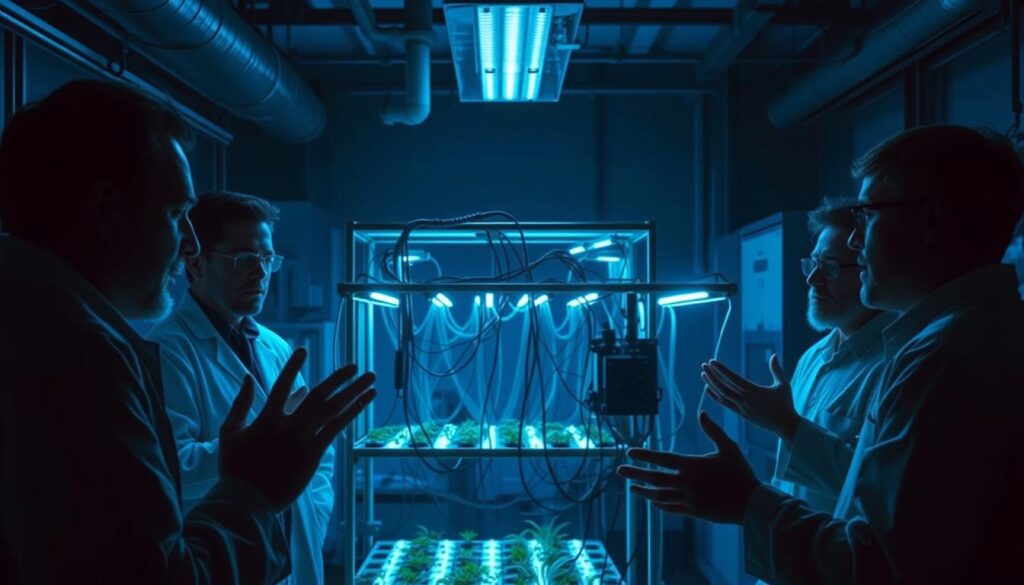
Limited Scientific Validation
Mainstream scientific research remains cautious. WSU’s Dr. Linda Chalker-Scott dismisses electroponics as a “horticulture myth”, citing a lack of peer-reviewed studies. Most evidence is anecdotal, with few controlled trials.
Unlike hydroponics, electroponics lacks USDA or EPA endorsements. DIY success stories abound, but lab-grade electrical outputs differ vastly from homemade setups. Gardeners should take claims with a pinch of salt.
Varied Results Across Plant Species
Not all plants respond equally. Tomatoes and leafy greens thrive, but succulents and cacti often react negatively to electrical stimulation. Key factors include:
- Soil type: Clay-heavy soils may interfere with telluric currents.
- Moisture levels: Dry conditions reduce conductivity.
- Species sensitivity: Root crops like carrots show slower adaptation.
Compared to other gardening methods, electroponics demands experimentation. For those exploring sustainable gardening methods, it’s wise to start small.
“Without rigorous trials, electroponics remains a fringe practice. Home growers should temper expectations.”
Ecological impacts are also unclear. While copper is low-toxicity, long-term soil accumulation risks are unstudied. Cost-wise, copper wire systems are affordable, but scalability for large farms is unproven.
How Electroponics Works: Methods and Tools
Two powerful tools dominate electroponics: the Ighina spiral and Lakhovsky coil. These antennas channel atmospheric energy into your garden, replacing synthetic inputs with nature’s electricity. With simple materials like copper wire and wooden stakes, even beginners can experiment.
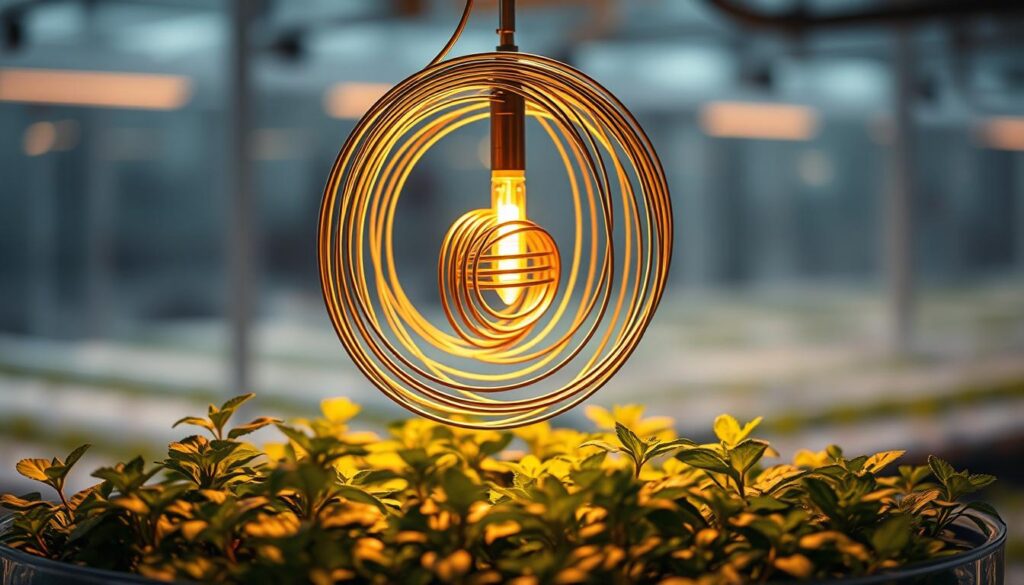
The Luigi Ighina Spiral Antenna
This spiral antenna uses a dowel and 12-gauge copper wire. Wind the wire tightly around a rod, leaving 4–6 inches extending past the end. The design mimics Earth’s magnetic fields, boosting plant metabolism.
For stability, anchor the rod with wooden stakes. A 99.9% pure copper coil ensures optimal conductivity. Budget builders reuse soda cans as templates, though commercial kits (from $1 per spike) offer precision.
The Lakhovsky Coil Loop Antenna
Georges Lakhovsky’s design features concentric loops with a 1-inch gap between rings. Tilt the antenna at 30 degrees to align with telluric currents. Unlike the Ighina spiral, this coil creates a resonant field, ideal for pest deterrence.
Essential tools include wire snips, cable staples, and a level. Trials show leafy greens respond best to loop antennas, while root crops prefer spirals.
| Feature | Ighina Spiral | Lakhovsky Coil |
|---|---|---|
| Best For | Fast growth | Pest control |
| Materials | Dowel + wire | Precision loops |
| Setup Time | 15 minutes | 30 minutes |
Both designs harness atmospheric energy differently. Start with the spiral for simplicity, then test the coil for advanced results. Either way, you’ll need just basic tools and patience to see changes.
Getting Started with Electroponics: A Step-by-Step Guide
Ready to experiment with nature’s hidden energy in your garden? Electroponics blends simplicity with innovation, using copper and natural currents to boost growth. Follow this guide to build your first system and compare results with a control group for accuracy.
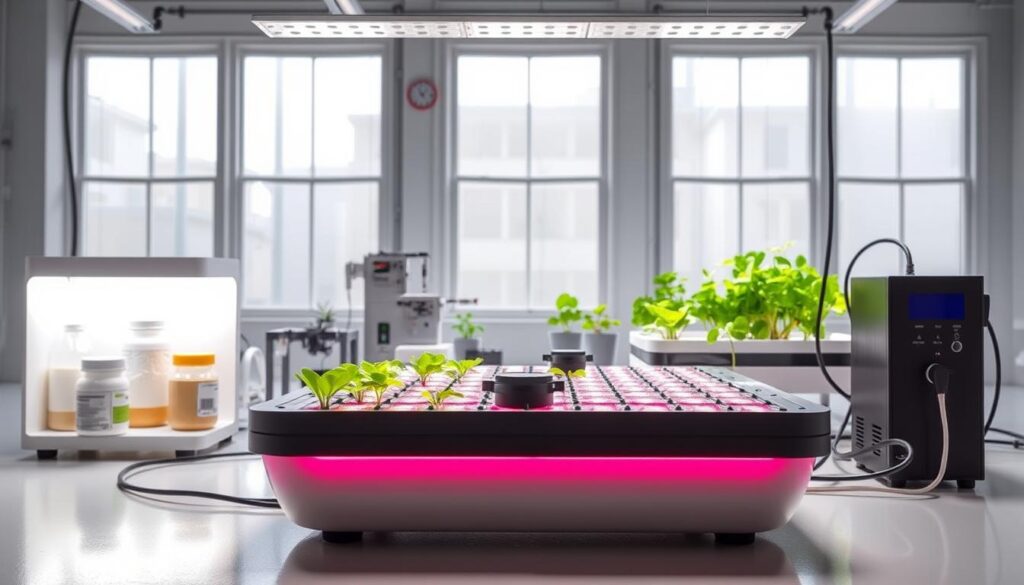
Materials You’ll Need
Gather these essentials before starting:
- 10-12ga copper wire (99.9% pure for best conductivity)
- Wooden stakes (12–18 inches long)
- Wire snips and cable staples
- A dowel or rod (for spiral antennas)
Total cost? Under $20 for small homes gardens. Reuse materials like soda cans for DIY molds.
Building Your First Electroponics Antenna
Ighina Spiral (Beginner-Friendly):
- Wind copper wire tightly around a dowel, leaving 4–6 inches straight at the end.
- Anchor the spiral vertically with stakes. Height = mature plant height + 8″.
- Face south for loop antennas to maximize sunlight and current absorption.
Pro tip: Label antennas and control plants to track differences.
Plant Selection and Setup Tips
Start with responsive crops:
| Plant | Antenna Type | Expected Growth Boost |
|---|---|---|
| Lettuce | Spiral | 15–20% faster |
| Spinach | Loop | 10–15% |
Troubleshooting: If growth stalls, check wire connections or relocate antennas. Dry soil? Add moisture to enhance conductivity.
Conclusion: Is Electroponics Right for Your Garden?
Curious about merging nature’s energy with your gardening routine? Electroponics offers a low-risk experiment for homes gardens. Blend it with organic practices for balanced results.
Despite limited scientific research, anecdotal successes abound. Take bold claims with a pinch of salt, but document your trials. Copper antennas cost little, making small-scale tests accessible.
This culture thrives as a supplement—not a replacement. Large farms face adoption barriers, but gardeners can explore freely. For beginner-friendly gardening tips, pair electroponics with traditional methods.
Final verdict? A promising twist for the adventurous grower.

